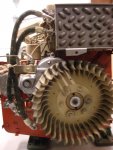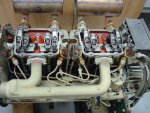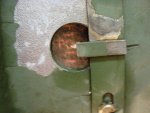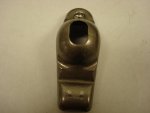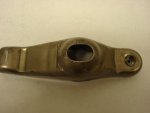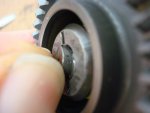NJ_Toolnut
New member
- 83
- 0
- 0
- Location
- Bloomsbury, NJ
Thanks Richard,
I was aware that it uses an Onan DJF engine before I purchased it. I was not aware Onan began producing them about 1970. I think (based on the initial dates in the TMs) the DOD started purchasing them around 1977. Unfortunately, the civilian models that wait quietly seldom advertise their presence.
Thanks for confirming my understanding regarding the Onan parts numbers listed in the TMs.
This part of my response is getting a little philosophical, but I'm OK with that. Unless I have a compelling reason not to, I try to do things as well as time, my ability and my wallet permit. Life is too short for rework, since I usually have so many projects going on simultaneously that I feel as though I can't afford the time spent doing rework. Sure, I want to make electricity, but I also want a completely reliable genset. I did a lot of research on generators before I acted, and this was why I selected a military surplus generator, an MEP003 instead of a different military surplus model and also one that recently had a Tier 2 reset (I knew it was still a crap shoot and unfortunately for me, I rolled snake eyes). By fixing it as well as I can, I'm hoping to ensure reliability. I want to fully understand how it works in order to be sure I know what I'm doing in order to do it as well as it can be done, but I also want to get it done in a reasonable amount of time. In addition, fully understanding how it works will ensure my ability to fix it if something else breaks. Hopefully, all it will require in the future is routine maintenance so that I can move on to other interesting in-process projects, like learning how to weld and finishing rebuilding my huge old metal shaper and pedestal grinder.
This is my first experience with green iron, but I've always been interested in it because I'm attracted to the promise it seems to have for ruggedness and reliability. I would classify myself as more of a "fixer" than a "tinkerer", but working on old machines sometimes presents the appearance of tinkering, since it frequently becomes necessary to keep them apart for long periods of time due to parts sourcing challenges. That's one reason why being able to do machining is valuable.
Best regards,
Stan
I was aware that it uses an Onan DJF engine before I purchased it. I was not aware Onan began producing them about 1970. I think (based on the initial dates in the TMs) the DOD started purchasing them around 1977. Unfortunately, the civilian models that wait quietly seldom advertise their presence.
Thanks for confirming my understanding regarding the Onan parts numbers listed in the TMs.
This part of my response is getting a little philosophical, but I'm OK with that. Unless I have a compelling reason not to, I try to do things as well as time, my ability and my wallet permit. Life is too short for rework, since I usually have so many projects going on simultaneously that I feel as though I can't afford the time spent doing rework. Sure, I want to make electricity, but I also want a completely reliable genset. I did a lot of research on generators before I acted, and this was why I selected a military surplus generator, an MEP003 instead of a different military surplus model and also one that recently had a Tier 2 reset (I knew it was still a crap shoot and unfortunately for me, I rolled snake eyes). By fixing it as well as I can, I'm hoping to ensure reliability. I want to fully understand how it works in order to be sure I know what I'm doing in order to do it as well as it can be done, but I also want to get it done in a reasonable amount of time. In addition, fully understanding how it works will ensure my ability to fix it if something else breaks. Hopefully, all it will require in the future is routine maintenance so that I can move on to other interesting in-process projects, like learning how to weld and finishing rebuilding my huge old metal shaper and pedestal grinder.
This is my first experience with green iron, but I've always been interested in it because I'm attracted to the promise it seems to have for ruggedness and reliability. I would classify myself as more of a "fixer" than a "tinkerer", but working on old machines sometimes presents the appearance of tinkering, since it frequently becomes necessary to keep them apart for long periods of time due to parts sourcing challenges. That's one reason why being able to do machining is valuable.
Best regards,
Stan



